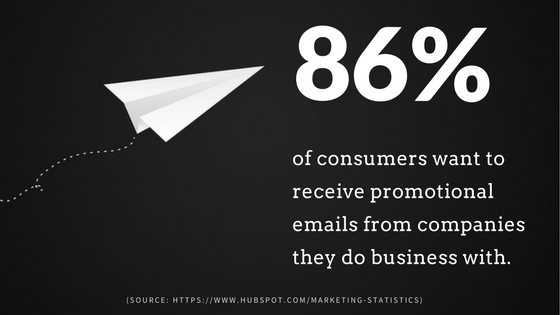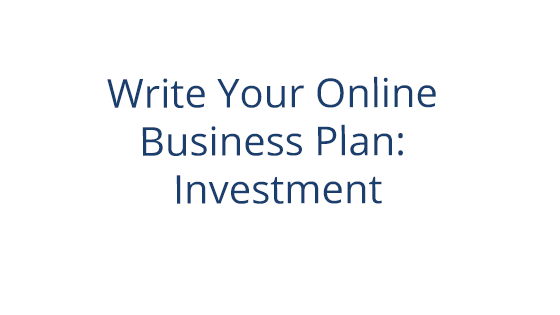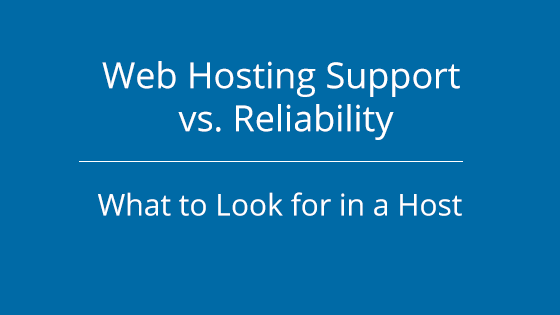
While it’s more commonly applied to social situations, consumers can also experience FOMO. A fear of missing out on once-a-year deals drives people to wait in long lines outside of stores at ungodly hours on Black Friday. While you can’t make everyday Black Friday, there’s no reason your online business or ecommerce website can’t take advantage of consumer FOMO all year long. You just need to engage with your consumers so you don’t miss out.
86% of consumers want to receive promotional emails from companies they do business with on a monthly basis. They don’t want to miss out on a good deal at their favorite online store. You can help them stay on top of sales with an effective email strategy.
With nearly 105 billion emails sent every day, how do you make yours stand out?
1. Get Permission and Build Your Email List
Building an email list takes time. You probably won’t see a significant jump in subscribers overnight, which can be discouraging. You have all of this wonderful content and no one to enjoy it! Before you give up or worse, start emailing everyone you can find an address for, you need to set up an opt-in process.
You need permission before you can start emailing people. Email tools like Mailchimp let you create a variety of different forms with a simple opt-in process. You don’t want your carefully created emails marked as spam so, make sure you have the right permissions before hitting send.
Here are a few things to keep in mind:
- Make it easy to sign up. People won’t subscribe if they can’t find your form so make sure it’s accessible.
- Encourage people to opt-in to your email list by giving them something in return. Email addresses are valuable leads so you should offer something of value in return. Send your new subscribers special discounts or informational content in exchange for their email.
- Don’t ask for too much information. The more information you require in a signup process, the more value you have to deliver in return. You’re less likely to get subscribers if you have a long form requesting demographic info, mailing address, and birth dates. However, if you offer something really targeted and highly valuable to your audience like a free trial or case study, you can request more information.
- Don’t forget about your existing customers. You don’t want to leave anyone with FOMO so, let your existing customers know you have a shiny new newsletter. While you don’t want existing customers to feel left out, you should give them the opportunity to opt-in before flooding them with emails.
2. Maintain Consistent Communication
Consistent communication is a common problem with email marketing. It’s easy to feel inspired at first and send a bunch of emails before losing steam and letting your list go stale. Establish your email marketing goals ahead of time and create a strategy to help you reach them. Don’t let your lists go stale, but definitely don’t send too many emails. 78% of consumers unsubscribe because a brand will send too many emails. It might take some time, but you’ll have to figure out the optimum number of emails over a period of time works for your audiences.
Segmentation and highly targeted content is a great way to keep your subscribers engaged without overwhelming their inboxes. Here are a few different types of email marketing you can use for different segments:
- Newsletters are perfect for many businesses. When people visit your website, you can ask them to sign up for your newsletter. Then you can share company news and sales with your website visitors through a regular newsletter.
- Are you running a blog? Let your followers know when you publish a new blog post with email notifications.
- Nurture campaigns take a lead and turn them into a customer. If someone enters their email address for your ebook, you have a lead! Now, you can nurture that lead by sending them a targeted campaign based on what they have already downloaded. You can use this opportunity to demonstrate value, establish credibility, and keep them engaged in your website.
- Re-engagement campaigns are email campaigns for your stale contact list. Use this as an opportunity to share new information about your website or your business.
- Abandoned cart campaigns can be extremely effective. Your customer already started the process of making a purchase on your site. All you have to do is reach out to them and remind them that they’re almost done. Show them what they almost purchased so they’re reminded of why they added it to their cart in the first place.
- Have you noticed people returning to the same purchase pages without converting? Send them discount notifications when that item goes on sale. It might inspire them to convert so they don’t miss out on the sale.
Segmenting your subscriber lists helps increase open rates because you can provide more tailored content to your recipients. Segmented email campaigns earned 14.31% more opens than non-segmented campaigns in a global study conducted by Mailchimp.
3. Write Compelling Subject Lines
Subject lines are like first impressions. You don’t want to make a bad first impression on your recipients. This is the first step to getting people to open your email after they’ve opted into your campaign. You can test different subject lines to see what works best for you. Check out our blog on how to write compelling subject lines.
4. Study Your Email Stats
There’s always room for improvement. Check your email stats to see what worked and what didn’t. Start with your open rates, click through rates (CTR), and unsubscribes. Low open rates and low CTRs means your content and subject lines need work. Or maybe you should try further segmentation. If your audience is too large, it will be more difficult to keep them all engaged. If you have low open rates, you’re not providing enough value to your subscribers and should reconsider your strategy.
There multiple ways you can use FOMO to your advantage as you develop an email marketing strategy for your website. You can use email marketing for a variety of websites, not just online businesses. If you have a blog, you can have your followers opt-in to receive email notifications whenever you post something new. If you have an educational website, you can have your site visitors opt-in to access content like webinars and ebooks.
No matter what email strategy you use, make sure you have a professional email address with a custom domain. Having a custom domain email address will help establish you as a credible source. It will also give your subscribers to respond to if they have questions about the content you sent.




